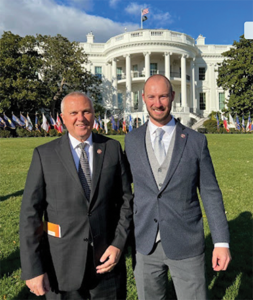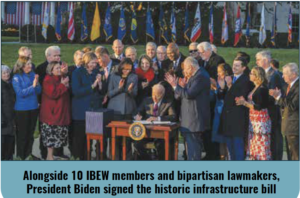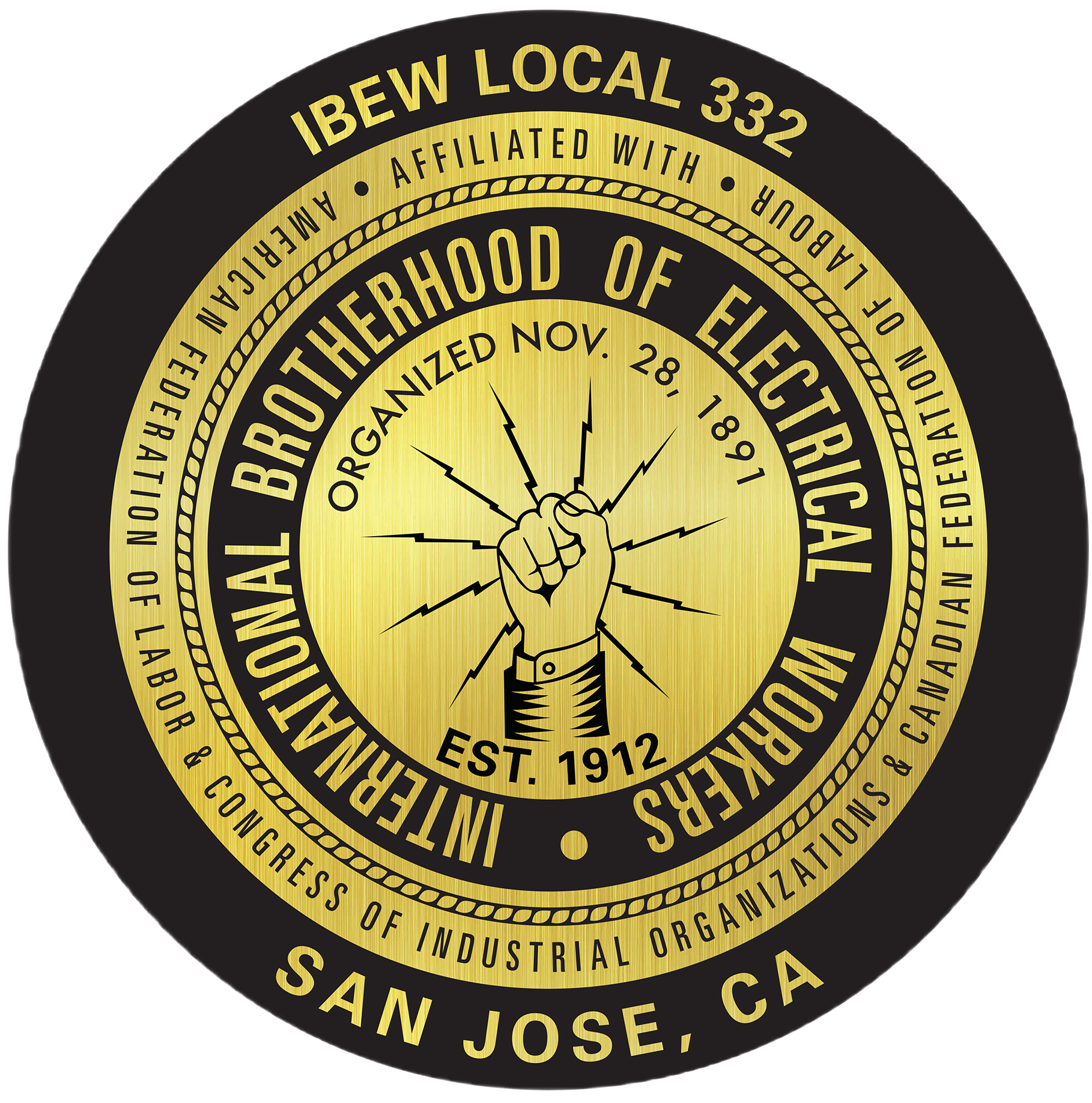 With the stroke of the pen, alongside more than 10 IBEW members and a bipartisan group of lawmakers at the White House on Nov. 15, President Biden made official one of the biggest infrastructure investments in U.S. history.
With the stroke of the pen, alongside more than 10 IBEW members and a bipartisan group of lawmakers at the White House on Nov. 15, President Biden made official one of the biggest infrastructure investments in U.S. history.
Its size and scope ensure that it will rebuild both the country’s weakened infrastructure and the middle class. Touching nearly every sector of the U.S. economy, the bill has been touted on a level comparable to the construction of the transcontinental railroad in the late 19th century and the interstate highway system in the 1950s.
Biden’s signature on the Infrastructure Investment and Jobs Act came after months of political wrangling after clearing the House in November.
Passage by the House of Representatives came only hours after the IBEW launched a lobbying effort involving hundreds of IBEW members working the phones in an all-out push that ultimately passed both chambers with bipartisan support.
President Stephenson had convened a call with more than 500 IBEW members to urge them to press their members of Congress to support the package.
“Congress must seize this once-in-a-lifetime opportunity,” President Stephenson told the IBEW members. “I know IBEW members are ready, willing, and able to roll up our sleeves and get to work. But we cannot rebuild America on our own. We need elected leaders to understand the urgency of this moment. We need them to take action immediately.”

President Stephenson said it is past time for investment in America’s foundation. “This is our chance for robust, transformative, job-creating investments in infrastructure,” he said. “Let’s show our elected leaders the power of IBEW strength and solidarity.”
Winning Passage of the Build Back Better Act
Relief for middle class families is one step closer with the Build Back Better Act, a second major investment. It passed the House of Representatives on Nov. 19.
Like the infrastructure bill, the Build Back Better Act will make transformative investments in future generations, our health care system, and our public schools.
“For generations, IBEW members have joined our working sisters and brothers across the economy in calling for the kind of basic protections and services found in the Build Back Better Act,” President Stephenson said. “This historic legislation will improve quality of life for millions, and today, IBEW members are celebrating its passage by the U.S. House of Representatives.”
The nearly $2 trillion bill includes $555 billion for clean energy tax credits/climate funding, expanded Affordable Care Act tax credits, and caps on childcare and out-of-pocket prescription drug costs. The bill also sets aside $20 billion for workforce development activities, including $6 billion in funding to expand apprenticeship programs over the next five years.
President Stephenson said the IBEW looks forward to working with lawmakers in the Senate to enhance the legislation by including provisions to retain jobs for existing workers in communities that depend on the energy industry for economic survival.
“Restoring the middle class has always been at the heart of President Biden’s ambitious plan to build back better, and the IBEW is proud to stand with President Biden, Vice President Harris, and Congress in fighting for the union workers who built the middle class and who continue to power our nation,” Stephenson said.
The IBEW will continue to lobby for the Build Back Better Act. Why? IBEW jobs, as well as economic relief for our families and all working families across the country. We have a once in a lifetime opportunity to make government work for the people, for workers, and for unions, and we need to do whatever we can to pass this vital bill.
- $110 billion for roads, bridges, and major projects
- $73 billion for electricity grid updates
- $66 billion for passenger and freight rail
- $65 billion for broadband internet expansion
- $50 billion for climate resiliency
- $39 billion for public transit
- $17 billion for ports and waterways
- $11 billion for transportation safety projects
- $7.5 billion for low-emission buses and ferries
- $7.5 billion for electric vehicle charging stations

